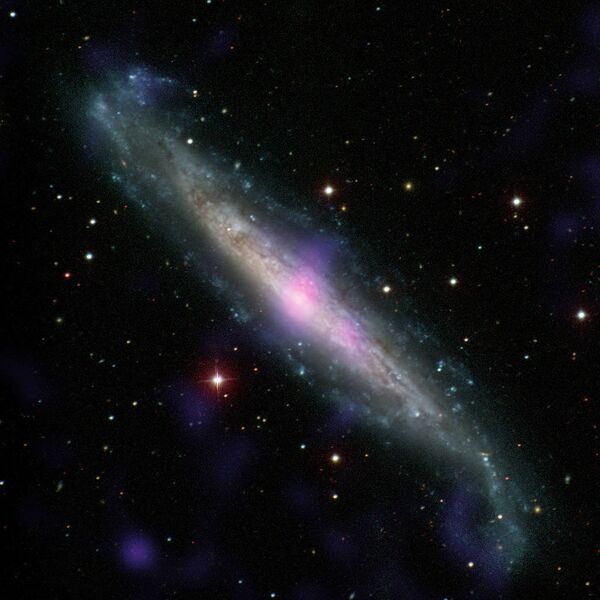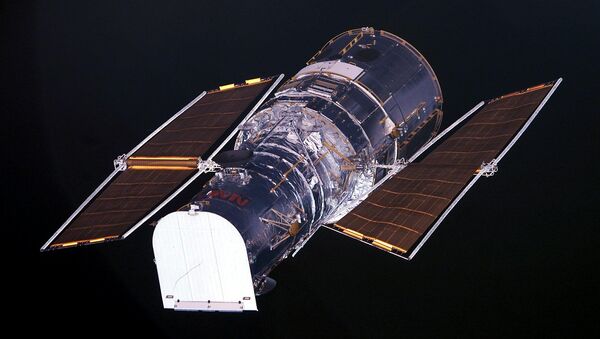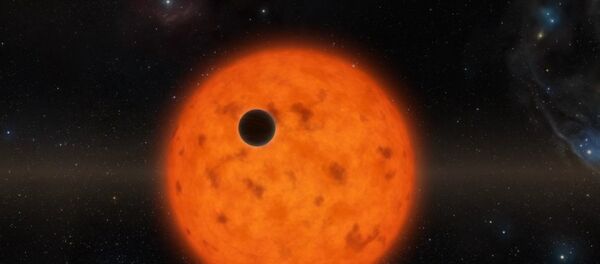NGC 1448 is about 50 million light-years from Earth in the little-known Horologium Constellation. The unusual spiral galaxy has an oval shape rather than a circle.
"Imagine a spiral galaxy as a circular frisbee spinning gently in space. When we see it face on, our observations reveal a spectacular amount of detail and structure," wrote NASA in a statement. "However, the NGC 1448 frisbee is very nearly edge-on with respect to Earth, giving it an appearance that is more oval than circular. The spiral arms, which curve out from NGC 1448's dense core, can just about be seen."

The photos of NGC should help answer the "winding problem" of spiral galaxies, which the ESA explains as: "the stars in these dramatic spiral configurations are constantly moving as they orbit around the galaxy's core, with those on the inside making the orbit faster than those sitting further out."
"This makes the formation and continued existence of a spiral galaxy's arms something of a cosmic puzzle, because the arms wrapped around the spinning core should become wound tighter and tighter as time goes on – but this is not what we see. This is known as the winding problem."
The theory to answer this problem is the Density Wave Theory, which claims that the arms of a spiral galaxy have a higher density than the actual matter that makes them up. It is frequently compared to a traffic jam: as the number of cars in the traffic jam increases, the slower the traffic jam moves despite the increase in density.
The same can be said for the celestial objects that make up the galactic arms. Even as the arms grow more dense, the movement of the arms themselves remain constant.
NASA also believes there to be a supermassive black hole in the center of NGC 1448 – the same as the Milky Way Galaxy.





